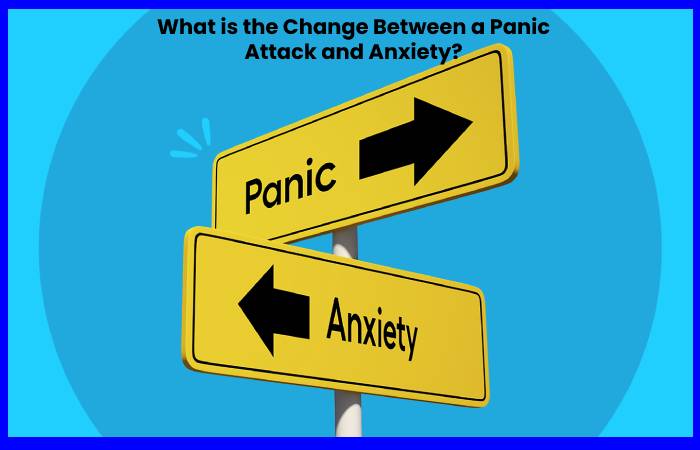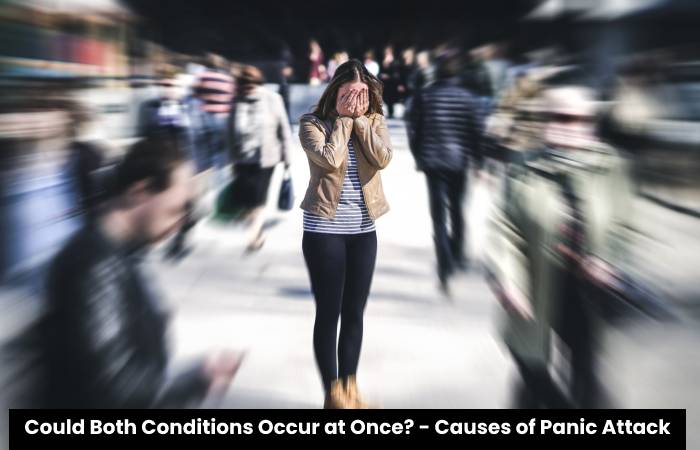Causes of Panic Attack vs. Anxiety Attack: 6 Things to Know – Feelings of fear, fear, and restlessness can be paralyzed. The key to recovery is identifying the symptoms and knowing that help is available.
Your body may react if you feel a sudden nerve surge or strong emotions. Among other things, sweating, tremors, or nausea can occur.
“These are very different emotional states,” says Dr. Rix Warren, clinical associate professor of psychiatry at the University of Michigan.
Anxiety is excessive and persistent concern about imminent events such as death or illness or minor events such as late promises or other uncertain consequences. Symptoms include fatigue, alertness, restlessness, and irritation, often long-lasting.
Panic attacks, on the extra hand, are short spurts of intense fear, often characterized by increased heart rate, sharp chest pain, or shortness of breath. They usually last less than 30 minutes and can occur once or repeatedly, sometimes for no reason. These episodes can be mistaken for heart attacks and sent to the emergency room.
Table of Contents
What is the Change Between a Panic Attack and Anxiety?
Warren: Anxiety is what we experience by worrying about future events and anticipating possible harmful consequences. It is often associated with a general feeling of muscle tension and restlessness. And that usually happens gradually.
Panic attacks are different. It is related to a sudden and intense horror outbreak due to the current sense of threat, combat or flight responses programmed to face imminent danger. Activate that alarm.

When Might One or the Other Occur?
Warren: So if you’re walking in a dark alley, you probably think there might be a potential danger. The anxiety of expectations, the stomach sensation, and the heart rate rise. But if you’re walking down the alley and someone jumps out with a knife, you’re probably under a panic attack—the overwhelming need to escape dangerous situations.
Panic attacks can also be triggered by subtle clues, such as certain sensations. For example, a person has chest pain, which can be interpreted as a heart attack. Or maybe they feel dizzy and have a stroke.
How do our Bodies Choose Which Reaction Is Appropriate?
Warren: Biologically, panic attacks are related to the autonomic nervous system and Amigdara. Where threats and dangers design to detect, anxiety associate with the frontal cortex, which associate with planning and prediction.
Could Both Conditions Occur at Once? – Causes of Panic Attack
Warren: Yes. One may be anxious to go to a party. Sometimes, when they fall into such a situation, in addition to anxiety, they panic attacks because they notice the problem as psychologically potentially dangerous: they judge me. Are you going

Are Specific Individuals More Susceptible? Which Condition Is More Common?
Warren: People wires to experience both anxiety and panic attacks. Some people worries or anxious because their nervous system is so sensitive. But, if they grow up with others who care for them, they can learn to care for themselves.
Clinically, there are probably more anxious patients than panic attacks. That’s because anxiety is essential to people’s everyday emotional life. As a result, they can feel uneasy in many different situations.
How do you Help Affected Patients? – Causes of Panic Attack
Warren: In general, anxiety disorders, which are characterized by anxiety until it becomes part of the disorder, for example, tension and anxiety about many different situations, the role of stress in producing symptoms given to the patient. How to treat it by teaching and dealing with worries. It may include challenging unrealistic ideas and working to improve your ability to withstand the uncertainties that are a significant part of anxiety.
For socially uneasy people, we usually create a hierarchy from the scariest type of situation to the most dangerous kind of situation, go out systematically and test the fear of what will happen. To do.
You can show them a drawing of a panic attack and explain the combat or flight response. Your attention and body are trying to help you. If a panic attack occurs out of nowhere, you can avoid motion chic and avoid adrenaline-boosting activities. Therefore, you can over ventilate for 1 minute in a controlled manner so that they are not afraid of their physical sensations. We are working on the internal avoidance of signals that become scary and insensitive.
It does not mean that the patient will never worries again, but there is ample evidence that participation in treatment can overcome these conditions. It depends mainly on the sternness of the disorder.
